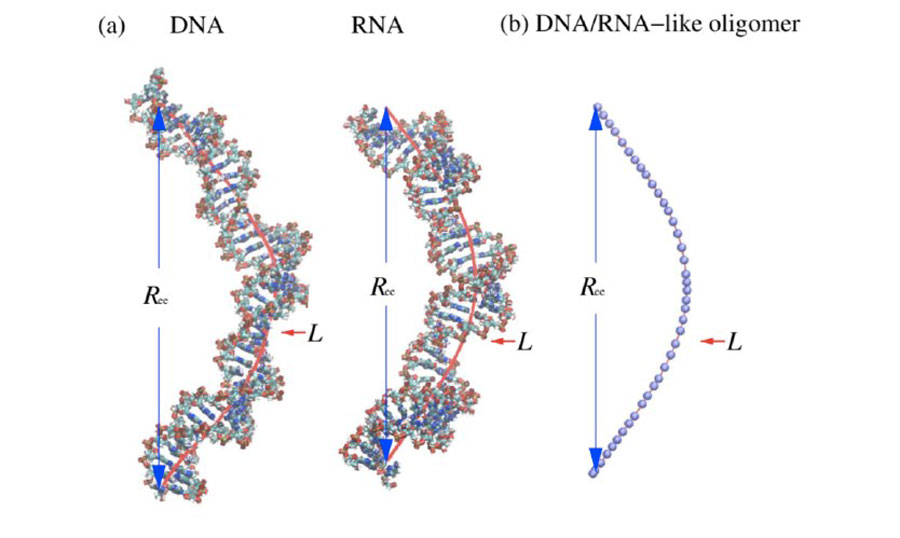A new formula from scientists in China calculates the length and curvature of semiflexible polymers, improving our understanding of DNA and RNA dynamics
From the Journal: The Journal of Chemical Physics
WASHINGTON, D.C., August 1, 2017 — Unlike the rigid plastic models from chemistry class, real chains of molecules can bend and stretch, like beads on an elastic cord. Some polymers, like DNA, are especially stretchy, a characteristic that can complicate attempts to model their behavior.
Since the seminal work of Paul Flory, researchers have developed a variety of formulas for calculating distance between the ends of a curved polymer. However, these formulas have typically failed to consider the stretchiness of the molecule. In a new study, published this week in The Journal of Chemical Physics, from AIP Publishing, scientists have derived a formula to determine the end-to-end distance of a semiflexible polymer, including DNA or RNA, while taking into account how much the polymer stretches.
Previous estimates of how polymers bend did not account for how the molecule moves in three dimensions. “This method to calculate the contour length distribution is more rigorous,” said Xi Zhang from Wuhan University and lead author of the paper. “Not only can we calculate the end-to-end distance, we can also figure out the shape of the polymer.”
By including the stretchiness of the polymer, the new formula can help researchers estimate the flexibility of segments of DNA, a property known to be essential to its biological function. DNA’s flexibility impacts the binding of regulatory proteins and how the DNA wraps around histones, proteins that act like spools to keep DNA neatly packaged inside a nucleus. The specific ways that DNA bends and wraps around histones can affect gene expression by exposing certain genes to the outside, while others remain tucked away.
The researchers built on the foundation of the wormlike chain model, which treats semiflexible polymers like DNA and RNA as links in a chain. Using extensive Monte Carlo simulations, they validated their formula over a wide range of values for stretchiness and flexibility. They also used molecular dynamics simulations, which model how molecules move and interact in time, to ensure that they obtained similar results from their method for short DNA and RNA polymers.

This type of formula is more computationally efficient than using computer simulations to determine the end-to-end distance of stretchy, bending polymers, and, in seconds, can calculate results that could take weeks of simulations.
The new formula is especially useful for estimating the end-to-end length distribution of small polymers, the authors point out. “This stretching is really important in a biopolymer when it’s really short, say 40 base pairs,” Zhang said. They calculate that the effect of the stretching becomes negligible for DNA molecules longer than about 130 base pairs, and for RNAs longer than about 240 base pairs.
###
For More Information:
Julia Majors
media@aip.org
301-209-3090
@AIPPhysicsNews
Article Title
Radial distribution function of semiflexible oligomers with stretching flexibility
Authors
Xi Zhang, Lei Bao, Yuan-Yan Wu, Xiao-Long Zhu and Zhi-Jie Tan
Author Affiliations
Wuhan University, Yangzhou University, Jianghan University
